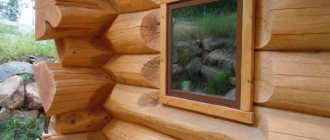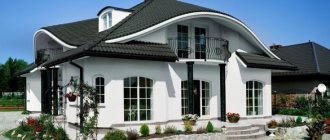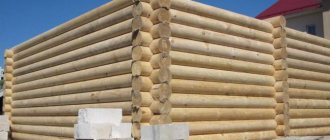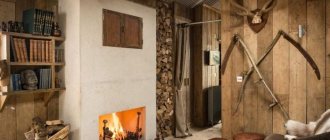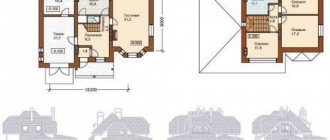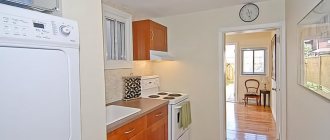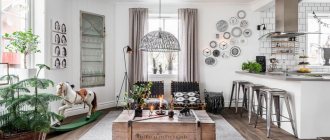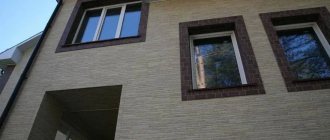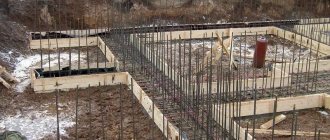- Features of LSTK houses.
- Construction technology.
- Characteristics of a thin-walled metal frame.
- Types of foundations for LSTK.
- What does LSTK consist of?
- Installation and stages of construction of LSTK.
- To make a frame from LSTK or not.
- Application area.
- Myths about LSTK.
- Advice from the experts.
LSTK - Light steel thin-walled structures are used for the construction of prefabricated frame buildings.
This technology originated in the middle of the last century. Canada. In Russia it became widespread only in the 90s.
Residential buildings and shops, commercial and industrial buildings, warehouses and garages are built from LSTK.
Features of LSTK houses
The load-bearing basis of such buildings is a steel frame made of thin-walled galvanized steel profiles, including guides, purlins, racks, lintels and other elements.
The assembly of structures is carried out without welding.
LSTK profiles are connected into a single structure using fasteners:
- self-tapping screws;
- mounting dowels;
- blind rivets;
- bolts;
- press connections.
The frame is sheathed with insulated panels, metal or vinyl siding, corrugated sheets, clapboard, and finished with brick.
To increase the thermal resistance and reduce the thermal conductivity of LSTC, a thermal profile with through slot perforation is produced. The use of a thermal profile helps eliminate the main problem of metal frames - cold bridges.
The zinc layer of rolled steel must be of the first class of galvanizing (275 g/ml).
All LSTK elements are manufactured in the factory. Special holes are drilled in the right places to assemble the frame. The house kit is accompanied by technical and other accompanying documentation: certificates of conformity and fire safety, sanitary and epidemiological reports.
Construction of the LSTK frame.
LSTK construction technology
The construction of houses made of LSTK is regulated by SP 260.1325800.2016 “Thin-walled steel structures made of cold-formed galvanized profiles and corrugated sheets.”
The technology involves reducing the cost and speeding up the construction process of low-rise budget houses and industrial buildings.
LSTK elements can be used as independent load-bearing structures, or combined with wood, brick, and reinforced concrete.
The basis for the construction of LSTK buildings is a post-and-beam frame made of galvanized rolled steel, filled with heat-insulating materials. The type and thickness of insulation is selected depending on the climatic conditions of the construction region.
A vapor barrier membrane is installed on the premises side to protect the insulation from steam and humidity penetrating from the premises. On the outside, the heat-insulating material is covered with a windproof film that protects the insulation from external atmospheric influences.
If the assembly technology is followed, the metal frame of the LSTK is not inferior to the wooden frame in terms of strength, stability and reliability.
Construction of a house made of LSTK
Reviews about efficiency
Today, perhaps, there is not a single person who would not strive to save money when carrying out repairs and construction. If you replace concrete with steel structures, as the owners of private houses and apartments say, you will save money when transporting the material, during its installation and subsequent operation, because concrete requires repairs when the building shrinks, but steel elements do not. In addition, private craftsmen and professional builders say that they often choose steel rather than brick and mortar, since the installation of the first material takes less time and does not require the use of expensive construction equipment.
Characteristics of thin-walled metal frame
The main characteristics of thin-walled metal profiles include:
- versatility - LSTK metal structures are suitable for the construction of structures of simple rectangular shapes, as well as buildings of several floors with complex architecture;
- strength and reliability - the material is designed for high loads, suitable for construction in seismic zones;
- the low weight of LSTK allows you to get by with light, shallow foundations, and when installing the frame you do not need to use lifting equipment.
- durability - thanks to the zinc coating, the metal is not subject to corrosion and can last more than 60 years without loss of strength.
Profiles for the construction of buildings and structures are prepared in the factory. Technological holes are being drilled. Products are marked according to assembly drawings.
At the construction site, the building is assembled in strict accordance with the attached technical documentation.
Types of foundations for LSTK
The low weight of the structures makes it possible to do without expensive and massive foundations.
Various types of lightweight foundations are suitable for buildings made of LGSF:
- Strip foundation.
It is a reinforced concrete strip along the entire perimeter of the load-bearing walls. The strip foundation is made of prefabricated or monolithic reinforced concrete, about 600 mm high, 300 to 600 mm wide. To prevent deformation under the influence of frost heaving forces, waterproofing with coating materials and insulation with extruded polystyrene foam are carried out along the entire perimeter of the foundation.
Strip foundation.
Slab foundation
It is a continuous monolithic slab under the entire area of the building. It is carried out in places with increased seismic activity, in swampy areas, and with high groundwater levels. The slab foundation can withstand high loads. It is distinguished by reliability, durability and stability.
The slab will cost more than any other base, due to the large amount of concrete and metal used.
Slab foundation.
- Bored piles.
Pile foundations are ideal for the construction of buildings in areas with complex and variable terrain. They are carried out by drilling holes in the ground, lowering a steel frame into the hole and filling the hole with concrete.
From above, the bored piles are combined into a single structure with a reinforced concrete strip grillage.
Foundation on bored piles.
- Screw piles.
The fastest and most affordable option. Suitable for construction on water-logged, heaving soils with a high level of groundwater.
Screw piles can be installed at any time of the year. Ready for full loads immediately after installation.
They are performed by screwing steel rods into the ground, with a blade at the end.
The length of screw piles is more than two meters, depending on the depth of soil freezing.
Foundation on screw piles
The choice of foundation for LSTK depends on the geological characteristics of the soil, the level of groundwater, loads on the foundation, both from the future structure and from external influences (snow, wind, frost heaving forces).
What does LSTC consist of?
The main elements of LSTK are cold-formed open-section profiles:
- C-1 - universal rack;
- U-1 - universal guides;
- Z-shaped;
- jumper profiles;
- ПШ - hat profiles.
LSTK profiles are made from rolled sheets with a thickness of 0.8, 1.0, 1.2, 1.5, 2 mm, hot-dip galvanized using the cold forming method.
The class of zinc coating can be 200, 275, 350.
Types of LSTK profiles: 1 – U-shaped thermal profile (guide); 2 – C-shaped thermal profile (rack-mount); 3 – hat thermal profile; 4 – U-shaped profile (guide); 5 – C-shaped profile (rack-mount); 6 – galvanized corner; 7 – Z-shaped profile
The thickness of the metal and the class of galvanization provide the structure with strength and durability.
The height of the profiles ranges from 100 to 350 mm, depending on the thickness of the insulation used.
Each profile is marked, indicating the type, manufacturer's trademark, metal thickness, section width and length of the product.
Average prices of LSTK profiles on the Russian market
Let's look at some LSTK products. Prices are as of October 2022.
| Purpose | Size, mm | Length, m | Metal thickness, mm | Cost (as of October 2022), rub. |
| Rack, partition | 100×50 | 4 | 0.6 | 400 |
| Partition guide | 100×40 | 3 | 0.6 | 280 |
| Rack-mounted | 50×50 | 3 | 0.6 | 200 |
| Rack-mounted | 100×50 | 3 | 0.6 | 240 |
| Reinforced (for doorways) | 100×40 | 3 | 2 | 930 |
For approximately the same price you can buy LSTK profiles on the Russian market.
Advantages and disadvantages of LSTC
The construction of buildings from light metal structures is safe and cost-effective.
The advantages of LSTC include:
- exact geometric dimensions of metal elements;
- absence of wet processes and the possibility of construction at any time of the year;
- waste-free and clean construction;
- high assembly speed and low labor costs;
- long service life of light steel frames;
- seismic resistance and durability;
- no shrinkage;
- high factory readiness;
- affordable price of LSTK.
When constructing frame buildings from LSTK, you can do without powerful lifting equipment.
Lightweight compact LSTC profiles are tightly stored without taking up much space during transportation.
Ready-made house kits are manufactured at the factory and transferred to the site along with technical documentation, assembly instructions, and certificates of conformity.
The error in geometric dimensions is no more than 0.5 mm, which ensures exceptional accuracy of installation work.
A frame made of galvanized profiles is not afraid of insect pests; they are not affected by fungi and mold.
Light steel structures can be easily dismantled and reinstalled in the desired location.
The disadvantages of LSTK are associated with unscrupulous manufacturers and installers:
- When installing a frame without soundproofing gaskets, there may be a booming sound and good audibility in the rooms.
- insufficient thickness of the insulation and violations made during assembly can lead to the formation of cold bridges and freezing of the walls;
- The construction of buildings and structures of complex architectural forms requires professional knowledge and experience.
Buildings made from lightweight steel frames must be erected by specialists. Errors in the assembly of the frame can lead to distortion of structures and even their collapse.
Installation and stages of construction of LSTK
Any construction begins with a project.
Manufacturers of LSTK house kits and design companies offer a large selection of standard projects. If necessary, you can order adjustments to your favorite project or the development of an individual one, in accordance with your needs and desires.
Standard designs are developed taking into account snow and wind loads.
Work on the construction of houses from light building structures using frame technology includes the following stages:
Construction of foundations
The choice of foundation type depends on the geological features of the soil, the topography of the site, the dimensions and number of storeys of the building and is determined by the project.
The cheapest and most quickly erected foundation is steel screw piles. This type of foundation is suitable for one-story buildings without a basement or ground floor. A strapping beam made of 16-22 mm steel channel is mounted on top of the screw piles.
For buildings of two or more floors with a basement or plinth, prefabricated strip or monolithic foundations are chosen, installed along the perimeter of the building and under all load-bearing walls.
To construct monolithic foundations, formwork is installed, a spatial reinforcing frame is mounted, and class B15 concrete is poured. After the concrete has gained strength, but not earlier than 20-28 days, subsequent work can begin.
Wall construction
The frame of the wall enclosing structures is mounted from rack and guide thermal profiles in accordance with the working drawings. The pitch of the racks is at least 400 mm.
All elements are assembled into a single structure using self-tapping screws. The profiles are attached to the foundations with anchor bolts.
For rigidity, connections are made of metal tapes, fastened with self-tapping screws to each rack.
During the assembly process, the vertical and horizontal installation accuracy is controlled.
Connection of the guide profile to the rack and connection diagram.
Utilities are laid inside the LSTK frame.
The space between the racks is filled with mineral wool insulation at random. A windproof film is attached to the outside of the wall structures. On the inside there is a vapor barrier membrane. The film and membrane are laid with an overlap. The joints are glued together with construction tape.
Inside, the walls can be sheathed with gypsum fiber sheets, OSB or cement-bonded particle boards.
LSTK facades are finished with any facade materials: brick or stone, facade panels or siding, plaster or wood.
Installation of interfloor slabs LSTK
A U-shaped profile is fixed to the top of the wall panels. Transverse profiles are installed and secured to the wall beams with self-tapping screws. The diagonals are checked and connections made from metal tape are installed.
A ceiling sheathing made from a hat profile is installed from below, with a pitch of at least 400 mm, and corrugated sheets, gypsum fiber boards, OSB or DSP are hemmed.
The ceiling is insulated with mineral wool basalt slabs.
Corrugated sheeting is laid on top of the profile frame, with the corrugations directed across the purlins. Each corrugation is secured to the purlin flange with 2 self-tapping screws. A floor made of two layers of gypsum fiber board is installed on the corrugated sheet.
Installation of interfloor slabs of LSTK.
Installation of roof and roofing of LSTK
A Mauerlat made of a rack profile is attached on top of the wall panels. Support posts are installed with fastening through the support angle and the Mauerlat to the upper guides of the wall panels.
The rafter legs are attached to the mauerlat posts with self-tapping screws (at least 10 pieces per unit). A sheathing made of a hat profile is installed on top, a windproof membrane is laid and metal tiles or corrugated sheeting are mounted.
Along the perimeter, to the extension of the rafter legs, a cornice profile is attached.
Installation of LSTK roofing.
When installing metal structures, insulating spacers with a width of 60-200 mm should be used, depending on the height of the profile.
Construction of a metal frame house
The construction of metal frame houses as individual housing is almost no different from similar work on the assembly of buildings made of timber. The node connections of the profiles and the fasteners used differ.
Main connecting nodes of LSTK
The steel frame consists of many node connections, but the main ones are distinguished, where high-quality fastening is especially important.
- Connection of racks to the foundation. Performed through the supporting element using anchor bolts.
- A truss truss, where sheet plates, gussets, and fasteners are used to assemble components.
- Connection of the rafter truss and the vertical post of the frame. All the same fasteners, a nodal gusset and a brace are required for execution.
- Cornice between the wall and the roof. The difficulty here lies in the proper junction of two “pies” with hydro- and thermal insulation.
When working with wood, the word “fastener” is strongly associated with a self-tapping screw or nail. The situation with a metal frame is a little different.
How to connect metal frame parts
One option for connecting two steel frame elements is to use self-tapping screws with special threads. They are inserted into pre-made holes and screwed.
Please note : screw connections are more suitable for non-separable structures.
The disadvantages of using screws are the lack of clear regulation of work with them and the low load-bearing capacity of the frame. Bolts of normal accuracy win in this regard.
You can also use welding to build a house from a metal frame. However, this is a labor-intensive process that requires some skill. Thin-walled elements are easily damaged during the joining process in this way.
So, a metal frame is a worthy alternative to traditional timber. A steel structure is not only not inferior to a wooden one, but also surpasses it in some respects. Many types of work can also be done with your own hands. But the more complex the project, the more specialists will have to be involved.
To make a frame from LSTK or not
A distinctive feature of the LSTC technology is the accuracy of geometric dimensions, high factory readiness and a significant reduction in loads on the foundation due to the light weight of the structures.
The weight of a steel frame is comparable to that of a wooden frame, but unlike its analogue, it has a longer service life.
Utilities can be placed in the frame cavities. Mineral wool insulation boards are installed between the racks.
To protect against heat loss, additional insulation is possible through the installation of hinged ventilated facades and internal cladding.
The main structural element of the LSTC frame is a profile with special perforation, which significantly increases the heat transfer resistance.
Frame structures made of LSTK can be sheathed from the inside with sheets of moisture-resistant plasterboard in two layers. Subsequently, it is possible to use any finishing materials: wallpaper, tiles, decorative plaster.
Brick and stone, siding and lining, facade panels or hinged ventilated facades are suitable for finishing facades.
LSTK frame houses are prefabricated. If necessary, they can be moved and installed in a new location.
The strength and reliability of buildings made from light steel frames depends on the coherence of the designers and manufacturers of the frame system, the use of high-quality hardware and strict adherence to assembly technology.
Table 1. Comparative characteristics of frames made of lightweight steel frames and wood.
| Indicators | LSTK | Wooden frame |
| Recommended wall thickness | 250 | 250 |
| Lifetime | more than 100 years | More than 50 years |
| Flammability | non-flammable | combustible |
| Heat transfer resistance (m²x°C/W) | 4,1 | 4,1 |
| Construction season | in any season | in any season |
As can be seen from the table, a frame made of light steel structures is not inferior in operational properties to a frame made of wood, and significantly exceeds its service life.
Using a thermal profile when installing light steel frames
Personal experience or from the world on a thread, so that the “shirt” does not disappoint
Even though factory frames are much less common than wooden or SIP frames, the portal has accumulated some experience in the construction and operation of metal frames.
PambonForumHouse Member
A house with a LSTK frame, I ordered the project and the house kit from the same company, no complaints about the completeness or production time. But they don’t have their own builders, they gave contacts for assemblers, the office turned out to be specific. In short, some advice - first find a team that builds these frames. Then look for the manufacturer and the project with them, they will explain the important details, because if you are not into the construction topic, then it’s f*ck! Nothing is clear, you sit and listen to the manager - what kind of overlap are we going to do? Do I know? Do you want this or that from your profile? I'm not an engineer, how do I know? And everything like that.
NjskovFORUMHOUSE Member
In my house with a LSTC frame, the thermal break is made like this - from the inside to the profile there is a 50x50 mm block and a single layer of gypsum fiber board to it. The walls are warm, there are no cold bridges, the walls never freeze. If I had the opportunity to build from LGSK again, I would lay another layer of insulation 50 mm thick on the inside between the beams. Do the vapor barrier and wind-waterproofing as carefully as possible, otherwise the frame will be blown out. It is imperative to insulate the steel frame in window and door openings. Good luck everyone!
ZhelezyakinForumHouse Member
I build from LSTK. Mainly for industrial purposes, but also relevant for private houses.
- To improve sound insulation, acoustic gaskets are used between the main floor profile and the hat profile (lathing under gypsum plasterboard or other slab cladding).
- Good ventilation of the under-roof space (under metal tiles) is required. Otherwise there is a risk of condensate flowing back.
- We prefer connections with rivets, otherwise wind pulsation will loosen connections with self-tapping screws over time.
- To increase the load-bearing capacity of the floors, we install a “spark” with a foam polyethylene gasket across one beam. But such “sparks” are perfectly held together with 5.5x25 mm roofing screws and a washer.
- For an attic roof, the thermal profile is placed only along the edge of the wall. Releases (fillies) are made of wood.
Ilya LinForumHouse Member
LSTK frame, for hanging a kitchen, boiler, sink in the future, I decided to use Knauf solutions. It is stated that this combination using cladding made of gypsum fiber sheets in two layers is designed for 150 kg. I purchased galvanized sheets, 1.2 mm thick, with MDF and screwed them to the frame.
Scope of application of LSTC
Lightweight thin-walled structures are used in the construction of buildings and structures for various purposes:
- low-rise residential buildings;
- shops and shopping centers;
- sports facilities and swimming pools;
- hospitals, schools, kindergartens;
- warehouses, production bases and agricultural facilities;
- parking lots, parking lots and garages.
In multi-storey construction, LTSC is used in the construction of enclosing structures, partitions, interfloor and attic floors.
Light structures are used to build floors and attics. Galvanized profiles are used in the construction of ventilated facades.
Construction of a production workshop using frame technology
Famous brands
The LSTKstroyGroup company offers you to purchase high-quality metal profiles from the largest Russian manufacturer ProfStalProka LLC, a thermal profile of its own production, as well as the Belgian brand Frisomat. All products presented in our assortment have all the necessary quality certificates, which you can view in detail on our official website if you wish.
The enterprise's activities were entirely aimed at creating affordable and mass housing in Russia. This enterprise used a continuous process of innovation, and the brand itself was famous for its following advantages:
- introduction of new effective developments;
- use of new technologies;
- creation of progressive products.
The Belgian corporation Frisomat is also a recognized leader in its field of specialization, having been working on the production of easily erected buildings for more than 30 years. During this time, the company's specialists have implemented more than 20,000 projects of residential and industrial facilities built in various climatic conditions.
If you decide to buy a reliable metal profile that fully complies with Russian and European quality standards, then we recommend you products from this well-known manufacturer.
Myths about LSTK
Despite the great popularity of buildings made of light steel thin-walled structures, many are skeptical about this technology, spreading various myths:
- The material is thin and not durable enough.
Some structural elements are quite thin and easy to deform. When assembled, such a frame is rigid and durable, capable of withstanding earthquakes with a magnitude of up to 9 points.
- Low load-bearing capacity of LSTK structures.
The structures are designed to withstand significant snow and atmospheric loads and mechanical impacts. When developing a project, the maximum permissible loads that the building can withstand are always calculated.
- Insufficient heat and sound insulation.
When insulating walls with mineral wool, using soundproofing pads and then finishing the walls with plasterboard sheets, a high level of sound insulation and low thermal conductivity of the walls are ensured.
- Formation of cold bridges.
To increase thermal resistance and reduce the risk of the formation of cold bridges, a special thermal profile with through slot perforation is used.
- The cost of a LSTK frame is more expensive than a wooden one
In fact, metal is more expensive than wood. But due to the fact that much less metal is used, and the technology itself is practically waste-free, it is much more profitable to build from light steel frames.
Profiles are made exactly to size and assembled like a construction set from precisely fitted parts.
- Fragility of buildings.
The use of high-quality zinc-coated profiles, suitable fasteners and professional assembly will ensure a long service life of 100 years or more.
- Low quality profiles
This problem can arise if you buy products from dubious factories and enterprises. Unscrupulous manufacturers may use second-grade metal or an insufficient layer of galvanization.
It is important to buy products from proven, reliable manufacturers with a positive reputation.
Production of light metal structures: general information
Lightweight steel thin-walled structures are made from steel, which is coated with various anti-corrosion compounds, which can significantly extend their service life. In addition to profiles, various connecting elements are produced, with the help of which installation is significantly simplified and assembly time is reduced. The dimensions of LSTC profiles can be completely different.
Currently, there are 26 factories in Russia that manufacture similar products, which have established themselves as manufacturers of quality products and have earned the trust of consumers.
Advice from the experts
When constructing buildings using LSTK technology on your own, you should listen to the advice of professional craftsmen:
- The house design should be chosen taking into account the needs of each future resident and the connection to a specific site.
- When choosing a foundation for a one-story house without a basement or ground floor, you can install screw or columnar foundations. For buildings of two or more floors, it is better to choose strip foundations.
- Particular attention should be paid to vapor barrier and wind protection. When steam from inside the premises and atmospheric precipitation come into contact with the insulation, the thermal insulation properties of the insulation are lost.
- When constructing houses from LSTK, a lightning rod and a metal frame grounding circuit should be installed along the entire perimeter of the building.
Structures made from light-weight reinforced concrete materials, made in accordance with technical documentation and strict adherence to construction technology, will be warm, reliable and durable.
